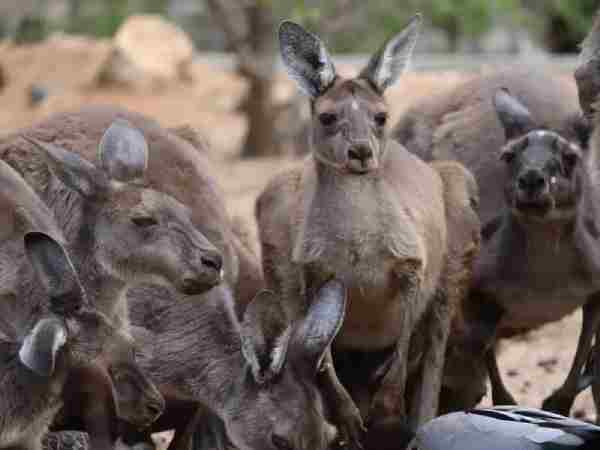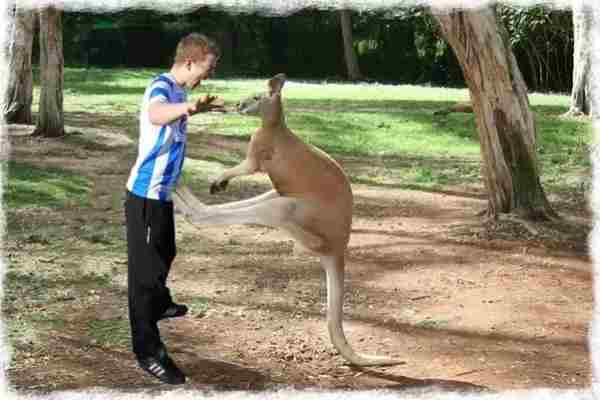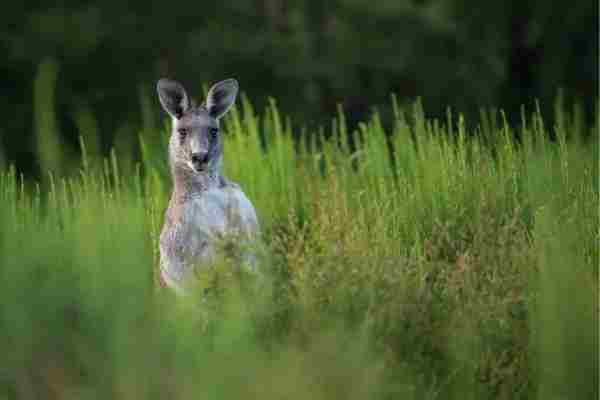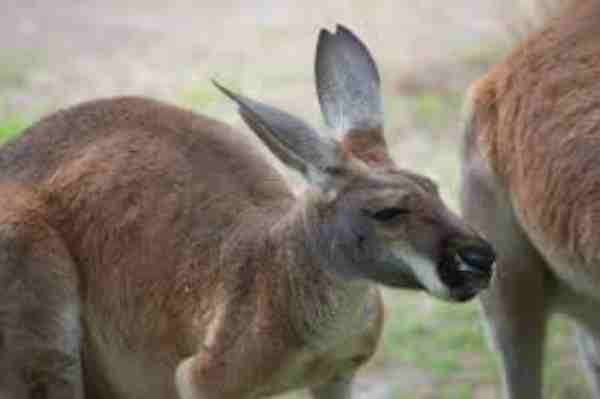With the ability to jump up to 30 feet in a single bound and cover 25 miles per hour, kangaroos are some of the most athletic animals on the planet. What’s more, their thick fur protects them during frigid nights and hot days alike, allowing them to survive in almost any environment. But why are kangaroos so buff?
Table of Contents
Kangaroos have muscular bodies which can be attributed to a number of factors. Just like any other animal, females favour males with more muscles and kangaroos are no different in this regard. Furthermore, as the largest known hopping animals on earth, they are naturally inclined to develop strong leg muscles for the trips they take around their habitats.
Along with these environmental factors, genetics also play an important role in those big muscles – muscle constitutes 50% of their total body mass! Though these seemingly gentle giants often look docile and placid upon seeing them in the wild or even at the zoo, there’s certainly more to them than meets the eye!

Why are kangaroos so buff?
Kangaroo’s muscular bodies make them a sight for sore eyes. From their strong and powerful hind legs to their toned and ripped abs, kangaroos appear like professional boxers ruling their division! But how do they become so buff in the first place? Well, believe it or not, there are three main reasons why kangaroos end up getting so muscular. We will discuss each one in detail
- Genetics
- Locomotion
- Mating Rights
Genetics
Red kangaroos are the largest species in their family and the largest marsupial on Earth. They use their two forelimbs and muscular tail as an additional balancing “third leg” when standing upright – a move that demands strength as the tail is equal in an exertion to both hind legs combined. As super aerobic animals, red kangaroos have significantly larger hearts and higher proportions of muscle mitochondria than other species like horses, dogs and antelopes, allowing them to dole out energy-intensive hops to find food or evade predators.
It is amazing how much difference there can be in aerobic potential between species due to the total amount of mitochondria in their skeletal muscles and organs. This can be seen most clearly in the red kangaroo, which has a whopping 50% of its total body mass attributed to muscle – mostly around its hind legs and pelvis.
Research delving further into this difference has revealed that those animals that are more regularly active have a far greater oxidative capacity than those who are less active despite having similar body masses.
Animals with more physical activities such as kangaroos, horses, and dogs have much larger hearts compared to their less active cousins like goats and cattle. It’s more than just the size though; these more active species also have higher amounts of mitochondria which enable them to have greater muscle mass than animals that are not as physically active.

Hopping
This amazing animal has a special locomotion technique that sets it apart from most other mammals. Unlike us humans who walk on four limbs, kangaroos have adapted to move by hopping on their two hind legs. Its powerful limbs are ready to spring forward at any moment. Its legs contain large muscles and strong flexible tendons that enable the kangaroo to jump great distances, as well as survive falls that would otherwise be very dangerous for almost any other mammal.
Similarly to the way compression springs function, kangaroos have developed adapted features that enable them to store physical energy as soon as their feet touch the ground. This is a key feature in their powerful style of jumping, which requires less effort from the animal compared to how humans jump. The most notable physical adaptation is the large tail acting as a balancing tool, providing stability and required torque for strong launches into each hop. Other crucial body parts include large feet that provide additional power and ultra-strong muscles aligned in their legs allowing them to reach incredible speeds of up to 43 mph and soar up to 25 feet away just in one leap alone.
Mating rights
Male buff kangaroos are well aware of their physical attractiveness and use it to attract females. When looking for a mate, the males take part in a unique activity known as “boxing”. During these boxing matches, the males flex their muscles and show off their strength in an effort to sway the female in the mob. After this display of machismo, the female selects which male she will ultimately mate with.
Furthermore, size plays a crucial role when it comes to mating rights. The largest kangaroo is usually considered dominant among the other males in the group and thus plays an important factor during mating season.

As females enter the oestrus cycle or the reproductive cycle, they attract the attention of males which generates fights amongst kangaroos. These fights are typically short-lived but can be particularly intense.
Whether it is such a fight or an extended battle that takes place depends greatly on muscle size – stronger and larger males tend to gain dominance quickly and muscle size is also what causes attraction in female kangaroos. Male kangaroos never stop growing to mean that with age comes more chance at maintaining mating dominance and claiming a female as their own.
Thus, male kangaroos with bigger muscles ultimately hold an edge in the competition for female attraction.
FAQs
How come kangaroos are so muscular?
They have adapted their physique over time to survive hopping along the Australian terrain, and as such, have developed incredibly muscular bodies that can send them bounding across great distances.
Kangaroos build up their large muscles for jumping by incorporating short bursts of speed with long strides, which helps them cover very long distances in their environment.
Why do kangaroos have such strong arms?
Kangaroos are known for their strong legs, but they also have strong arms – and with good reason. For a species that spends most of its day searching for food, having powerful arm strength allows kangaroos to pick up much more than they would be able to use their feet.
Why are kangaroos always flexing?
By flexing their forelimbs and strong hindquarters while they move, they can use less energy while jumping, allowing them to conserve precious resources and outrun predators at remarkable speeds.
Why are kangaroo’s arms so ripped?
In reality, most of the time spent hunting and grazing is done hopping on those strong legs! The secret lies in the musculoskeletal system of the kangaroos. They have evolved powerful extensors in their front legs, which allow them to punch when they get into aggressive situations.
Final Words
Kangaroos are certainly impressive animals. With their famously strong legs and cute pouch, they are some of the most iconic creatures seen in the wild. They have a lot of advantages due to their muscular builds—being fast runners, tireless fighters defending territory and having more success when it comes to mating season.
All these factors are related to strength as larger, more robust males tend to be victorious in competition for mates. This undoubtedly explains why kangaroos prioritize being jacked over anything else; being well-muscled is integral not only for locomotion but also for reproduction rights within the mob.
Reference:
- https://www.discovermagazine.com/planet-earth/male-kangaroos-arms-evolved-to-pound-the-crap-out-of-each-other
- https://timesofindia.indiatimes.com/home/science/how-kangaroos-woo-mates-the-males-flex-their-biceps/articleshow/21442274.cms#
- https://www.sciencetimes.com/articles/37285/20220422/kangaroo-shows-jacked-arms-adorable-video-why-hopping-marsupials-muscular.htm

Jeevan Kodiyan
An animal enthusiast with an interest in zoology, studying the behavior and activities of animals in the wild habitat. I work on research projects related to species conservation and endangered species protection. I also leverage zoology to become an educator, educating others about the importance of protecting our natural environment and the beauty of animals in their natural habitats.









